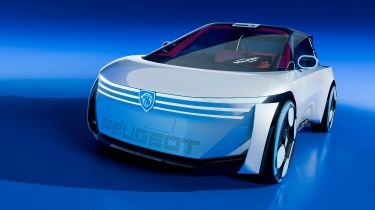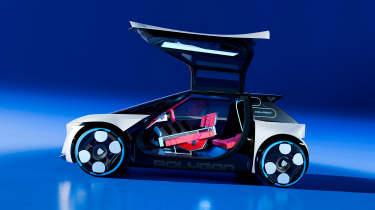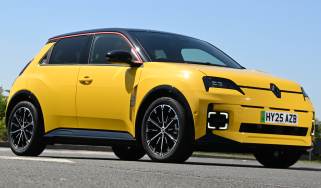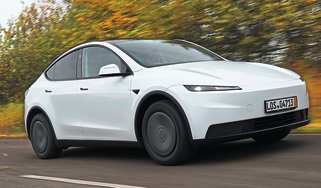New Peugeot 208: stunning Polygon concept hints at future supermini’s radical design and interior
The Peugeot Polygon concept hints at how the next Peugeot 208 supermini could look
The hugely important new Peugeot 208 is slated to arrive in 2027, and the brand’s bold new Polygon concept offers us a glimpse of the next-generation supermini’s avant-garde design and how it’s literally going to reinvent the wheel.
The Peugeot Polygon previews the brand’s future styling language, which focuses on purity, simplicity and geometric shapes, which on the concept combine to create “a more feline stance than ever,” according to the maker.
The concept is undeniably futuristic-looking, with the wheels pushed out to the very edges of the car, its windscreen resembling the glass canopy on a fighter jet, and a pair of huge gullwing doors that would make a Delorean jealous.
Peugeot’s signature three-claw light design has been reimagined using Micro-LED technology that stretches across the front and rear of the car. There’s another Micro-LED screen located on the C-pillar next to the car’s pop-up cable port, so drivers can check the car’s charge level from the outside.
However, the Polygon’s clean lines and angular design, combined with the fact it’s less than four metres long, does remind us of the Peugeot 205 and some of the brand’s other cars from the eighties.
If you can't wait for the new Peugeot 208 to arrive, you can get your hands on the current Peugeot 208 for just over £17,000 through our Buy a Car service.
How does the Peugeot Polygon concept look inside?
There’s a similar retro-futuristic vibe to the interior, but the bigger news is the next evolution of Peugeot’s i-Cockpit interior concept, with the Polygon concept bringing the brand’s radical Hypersquare steering wheel design and new steer-by-wire technology another step closer to reality.
The focus of the Polygon’s interior is simplicity, with the Hypersquare putting all the controls the driver might need at their fingertips via the circular pods at each corner. This allows the user to keep their eyes on the road.
It’s underpinned by what’s called steer-by-wire technology, which some companies like Lexus have already started using, and Peugeot says it will be putting into its road cars from 2027. It means there’s no mechanical link between the steering and front wheels, with the system relying on software to translate driver inputs to the road. This allows the steering ratio to be adjusted based on the car’s speed, so when parking or driving in a city it’s incredibly quick providing a “unique feeling of hyper-agility,” the company says.
Apparently drivers shouldn't have to move or cross their hands when manoeuvring, as the wheel rotates just 170 degrees each way to reach full lock. Then at higher speeds, only small inputs are needed to adjust the car’s course.
There’s no touchscreen in, on or atop the dashboard either. All the information is directly in front of the driver, reflected onto the windscreen via another Micro-LED panel located behind the Hypersquare steering wheel, which creates the equivalent of a 31-inch display. The Cruise, Fun and Hyper drive modes tailor the graphics and animations seen inside the car, and outside too.
Will the gullwing doors make production?
It might not look like it, but the Polygon has been designed to be exceptionally roomy, with its dashboard design helping to free up cabin space. Those enormous gullwing doors are also meant to offer better accessibility than a traditional five-door supermini.
Peugeot says the Polygon has been designed to maximise the use of recycled materials throughout the vehicle, with the entire cabin it what it calls ‘forged textile’ made from the recycled seats of old dismantled Peugeots. Meanwhile the shells of the seats are made from recycled plastic.
Using fewer parts was another goal for the designers, as fewer parts result in the car being lighter, more efficient, and easier to assemble, as well as disassemble at the end of its life.
As much as we’d like to see the next Peugeot 208 feature gullwing doors, they won’t be making production. However we know it will feature a version of the Hypersquare seen in the Polygon, the notion of simplicity throughout the car’s design should carry forward.
As well as introducing Peugeot’s steer-by-wire system, the new 208 will be the first car based on the STLA Small platform that’s also going to be used by the next Vauxhall Corsa which we recently learned was going to be available exclusively as an electric car. But whether or not its French sibling will go down the same route hasn’t been confirmed.
The new Peugeot 208 will hit the streets in 2027, and is likely to be when revealed the same year. Although the Paris Motor Show will be taking place in October 2026, which could serve as an ideal venue for the critical car’s `world premiere.
Our dealer network has 1,000s of great value new cars in stock and available now right across the UK. Find your new car…
Find a car with the experts











